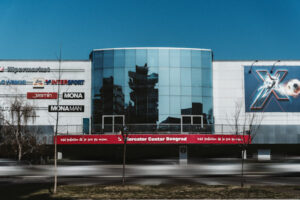By Bożena Gierszewska
As in-store shopping roars back in Europe, strong outlet centers in some markets are already grazing pre-Covid sales figures, with shoppers prioritizing value for money and with brands finding well-positioned centers to be a vital channel to sell their excess stock. Though not immune, the pandemic has reaffirmed the resilience of this niche industry and has also accelerated its already foreseeable development.
On the first place, the pandemic has proved that shoppers can get almost all they need online but are eager for human interaction, and it has also driven a polarization between destination shopping and hyper-local shopping. We like to think of our centers as a kind of “oasis”, in terms of the experience they provide. Looking for smart purchases has always had an experiential component, but with the increasing competition for people’s time and the risk of overstimulation, outlet centers can no longer rely only on their brands’ appeal to attract consumers. By creating homey experiences, curating the entire experience and taking comfort to the next level, centers can lure shoppers, build loyalty and ensure consumers spend more time there without feeling the need to rush home to unwind. Increasing the sense of novelty through pop-up formats and events, for example, can also help increase frequency of visits from the local catchment area, especially now, when international travel restrictions are still limiting the visitor mix.
The pandemic has also proved the importance of the intrinsic collaboration between tenants and operators which has been long seen as a strength of the outlet model. The turnover component of outlet leases, which involves intensive management and being the retailers’ eyes and ears on the ground, has allowed to maximize results whenever the centers were allowed to operate. Outlet leasing terms are particularly relevant in the current retail climate, as they have always allowed more flexible terms and shorter lease lengths.
Looking ahead, tenants might want to de-risk their leases even more by agreeing to turnover rent models only or signing leases for short-term pop-ups, with minimal investment required and taking pre-equipped units. We view this also as a great chance for the industry to have a stronger brand proposition while also revisiting operational models for a more cost and brand-equity driven approach. At the same time, brands have improved their flexibility to adapt their stock production to customer demand. This may lead to reduced excess inventory in the medium term and to brands’ focusing their outlet strategy on the best destinations.
The pandemic has also urged the industry to test omnichannel solutions that it was more reluctant to introduce due to outlets’ greater resilience to e-commerce and some retailers’ reticence to make their discounted stock more easily accessible. Virtual shopping and click-and-collect services, for example, have allowed tenants to continue selling their inventories when commerce restrictions were increased and may become a pillar of the business in a post-pandemic world as hybrid business models gain momentum.
Lastly, Covid-19 has underlined the importance of a collaborative, ambitious effort to overcome global challenges. The pandemic has been a wake-up call about the fragility of the world, and there is greater awareness of the environment and of retail with purpose and authenticity.
Overall, the most important lesson is that we cannot at all foresee how the future will develop. We can only build on our resilience and be as agile as we can. The outlet oasis is as real as our ability to wisely handle the special rules of this niche market and to keep aligned with the needs of shoppers, brands and the broader society.





